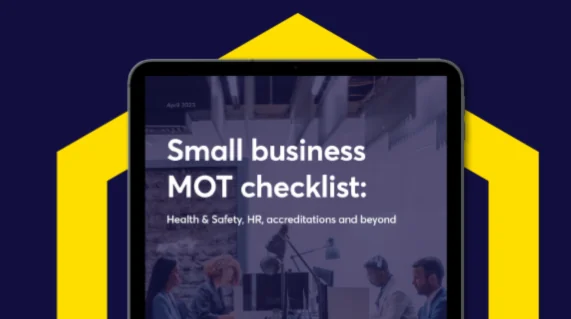Electricity is vital to running any workplace – but it also poses significant risks. Electrocution can be a common accident in the workplace, with around 1000 accidents involving electric shocks and burns reported to the Health and Safety Executive (HSE) every year. Making sure your workers are safe is a legal obligation as well as a moral one, so we’re here to delve into the common electrical hazards in the workplace and how you can prevent them.
What are the main electrical hazards in the workplace?
There is a wide variety of electrical hazards in the workplace that could jeopardize the safety of your employees, customers, or even the general public.
Common electrical hazards include…
- Overloaded sockets – plugging too many devices into a single outlet can lead to overheating and potential fires.
- Faulty wiring – damaged or deteriorating wires increase the risk of electrical fires and shocks.
- Poorly installed and/or maintained electrical equipment – improper installation or neglecting maintenance and checks can result in malfunctioning equipment.
- Electric shocks and burns from live wire contact – direct contact with live wires can cause serious injuries or even fatalities.
- Static electricity igniting flammable vapours or dusts – environments with flammable substances are vulnerable to static electricity, triggering explosions or fires.
- Incorrect use of replacement fuses – using the wrong or oversized fuses can overload circuits and increase the risk of fires.
- Wet conditions – water and electricity are a dangerous combination, increasing the likelihood of electric shocks and short circuits.
- Improper grounding – inadequate grounding can lead to electrical imbalances and pose a threat to workers.
Who is responsible for electrical safety in the workplace?
The duty holder is the one in charge of electrical safety in the workplace. This could be the employer, business owner or an appointed person in charge of Health & Safety in the workplace, like a Health & Safety manager. They are responsible for making sure all electrical appliances are safe to use and maintained throughout their usage period.
But electrical safety could also be regarded as a collective responsibility, with employees playing a vital role in promptly reporting any safety-related incidents or electrical hazards in the workplace like malfunctioning equipment to avoid accidents.
How to prevent electrical hazards
With so many types of electrical hazards to watch out for, mitigating electrical risks requires a thorough and detailed approach. Here are some essential measures to help keep your workplace safe.
Electrical risk assessments
Through regular electrical risk assessments, you can identify potential hazards and implement preventative measures.
Electrical safety testing
By using a system like PAT tests, duty holders can ensure compliance with safety standards and guarantee the safety of all their electrical appliances for use.
Regular maintenance
Proper installation and routine maintenance of all your electrical equipment is essential to ensure its safe and efficient.
Protective gear and equipment
Providing appropriate personal protective equipment (PPE) helps reduce the risk of injury in the workplace. This PPE may include head and eye protection, face shields for sparks, body protection made of insulating materials, and non-conductive safety overshoes.
Managing electrical cords and plugs
One of the best ways to prevent electrical hazards is effective cable management. This not only decreases the likelihood of cable damage but also mitigates tripping hazards, promoting a safer and more organised work environment.
Employee training
Finally, it’s important to offer relevant electrical safety training programs to ensure that employees are aware of electrical hazards and equipped with the knowledge to navigate risks safely.
Keep your business safe with HS Direct
Here at HS Direct, we understand just how important workplace safety is – particularly electrical safety. Download our FREE Electrical Safety in the Workplace template to help keep your workers and any visitors to your site safe.
Don’t forget to take a look at our Electrical Safety E-learning course, Electrical Fitting Risk Assessment and First Fix Method Statement to safeguard your workplace today! Or, if you’ve got more questions about the support HS Direct can offer you, just call 0114 244 4461 or get in touch and we’ll call you back.





